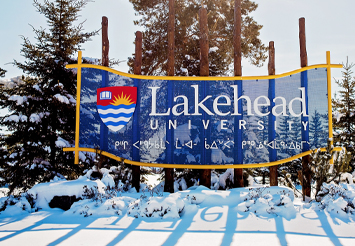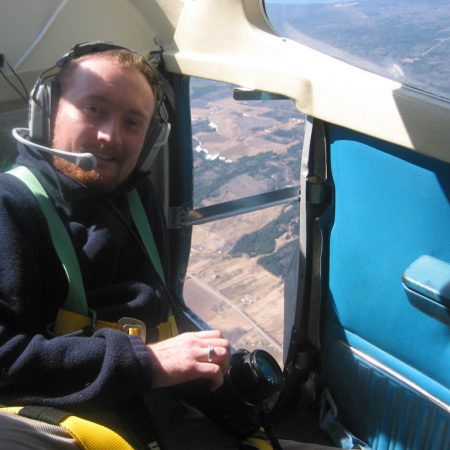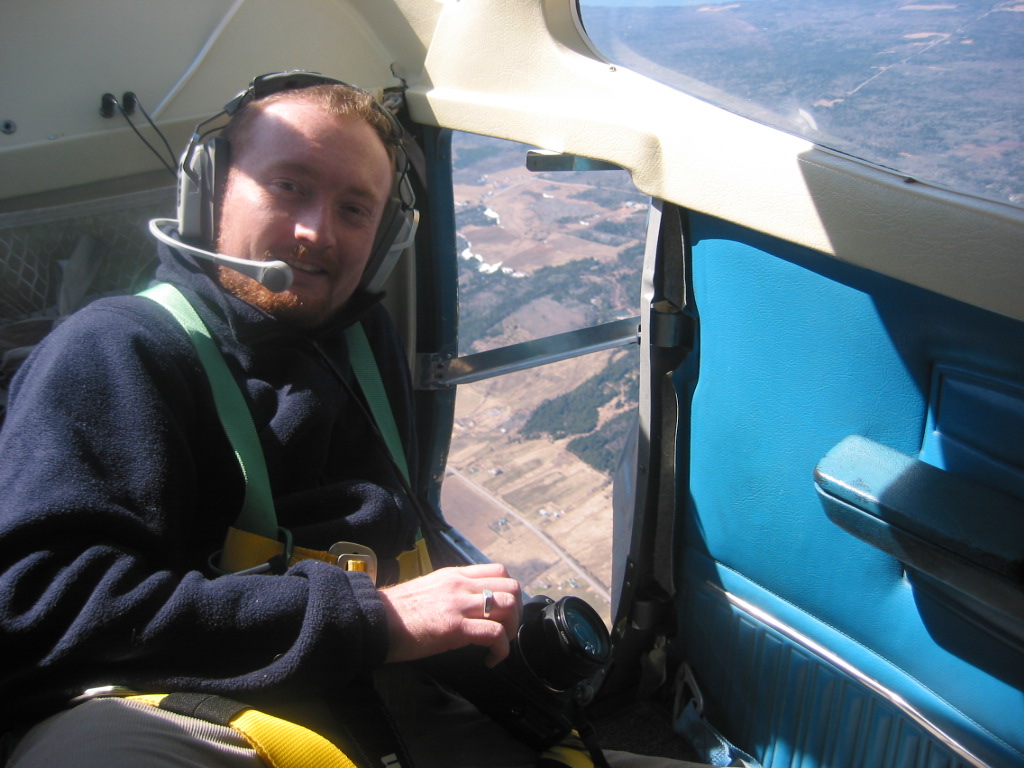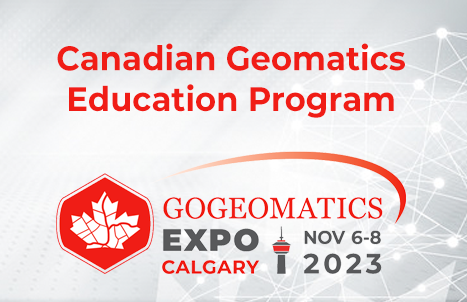Jason Freeburn discusses geospatial education at Lakehead University
This installment of our ongoing series on GIS and education in Canada features GoGeomatics talking to Jason Freeburn. Jason is one of our GoGeomatics group leaders in Thunder Bay and the Geomatics and Environment Technologist for the Department of Geography and the Environment, Faculty of Science and Environmental Studies at
Lakehead University. Go Thunderwolves!

Image from Lakehead University (lakeheadu.ca)
Jonathan Murphy: Welcome Jason and thanks for taking the time to talk to us. Can you tell us about yourself? Where are you from and where did you study GIS and geography?
Jason Freeburn: I grew up in Southern Ontario, in the Kawarthas. I came to Thunder Bay to attend Lakehead University as an undergraduate in a double-degree program in Geography and Outdoor Recreation, Parks and Tourism. I’ve always had an interest in maps and orienteering, but the program exposed me to the GISciences and I found the opportunities becoming possible with rapid advancements in geospatial data products and spatial analysis very intriguing. I went on to grad school to study geomatics in forestry and environmental management.
Jonathan Murphy: This is always a fun question: What was your first paid GIS contract or job? What did you do?
Jason Freeburn: In the final year of undergrad, I was hired as a GIS Research Assistant and also assisted with the lab section of the introductory GIS course. My first professional job was as a Remote Sensing Analyst for the Canadian Forest Service in Edmonton, focused particularly on characterizing and mapping forest disturbance.
Jonathan Murphy: Lakehead has a special Certificate in Geomatics. Can you describe it?
Jason Freeburn: The certificate program, originally named the Certificate in Mapping Sciences, was created in 2003 and renamed the Certificate in Geomatics in 2014. To attain the certificate, students must complete a set of five courses covering photogrammetry, cartography, remote sensing, GIS, and spatial analysis, and maintain a high GPA. This focus provides students an understanding of geospatial technologies, how the world is being managed and modeled by such technologies, and the associated impacts on decision making. All required courses include practical sessions collecting, processing, analyzing and publishing geospatial information. The curriculum is reviewed and refreshed often to reflect the rapid changes in this industry. The certificate is largely supported by three faculty members and two technologists in the Department of Geography and the Environment. The Department maintains dedicated lab space with advanced equipment for students enrolled in geomatics courses. The Department also houses the university’s Geospatial Data Centre, a valuable resource for students and researchers.

Jason Freeburn working with students in the Geospatial Data Centre.
Jonathan Murphy: How many students take up the certificate option?
Jason Freeburn: The number has increased over the years as the growth and relevance of geomatics in mainstream society has been noted. Now close to two-thirds of our geography majors opt to pursue the certificate. We also see students from other disciplines, such as biology, geology/earth sciences, water/resource sciences, and anthropology, enrolling in certificate courses.
Jonathan Murphy: What makes the Certificate in Geomatics at Lakehead special? Why would a student pick it over another program or additional qualification?
Jason Freeburn: A distinct advantage of the certificate is the ability for students to count the five required courses for both the certificate and their degree. No additional coursework is required except for those who pursue the certificate as an additional qualification post-graduation.
Jonathan Murphy: Can you describe a couple of interesting projects you or your students have worked on recently?
Jason Freeburn: Sure. The Advanced GIS and Spatial Analysis class recently finished a set of term projects. As a significant aspect of this capstone course in geomatics, students are expected to integrate a suite of spatial data through a series of spatial analyses to solve a current-day problem. One group examined drivers of blue-green algae production in lakes experiencing eutrophication, working in part with data from Kawartha Region Conservation Authority. Others spatially assessed the effectiveness of capital works projects recently undertaken by Thunder Bay Hydro on reducing the volume and impact of power outages, while another group partnered with a local community food program, Roots-to-Harvest, on a site-selection analysis for future community garden locations. And working with data provided through the Lakehead Social Planning Council, a student went on to present her research, a spatial assessment of vulnerability to homelessness and primary support services in Thunder Bay, last month at the first Northern Ontario URISA conference.

Undergraduate student Rylie Nellis presenting at URISA.
Jonathan Murphy: Open source software for GIS continues to grow. Is this a part of the tool box you teach in the program?
Jason Freeburn: Yes, we are always seeking ways to integrate student exposure to new open-source products, apps, and data warehouses into our programming.
Jonathan Murphy: What are the most important skills an aspiring GIS professional should master? Is it Python, for instance?
Jason Freeburn: We still take the pedagogical approach that here, as part of attaining an undergraduate university degree, students should be exposed to what is possible and be trained as thinkers, as problem solvers. We find ourselves steadily replacing receptive (lecture) instruction with exploratory instruction and guided discovery. Students should learn how the world is being changed by geomatics and how the geospatial community integrates with the broader community. The geomatics professionals of tomorrow will need to be more interdisciplinary, and able to optimize the patchwork of geospatial software and data services becoming mainstream in order to be effective or competitive. The most important technical skills for an aspiring GIS professional are undoubtedly those of the sciences upon which GIS is built, including cartography, photogrammetry, surveying/geodesy, and digital image processing skills.
Jonathan Murphy: What does Lakehead University have in terms of laboratories with geomatics capabilities?
Jason Freeburn: The University houses several laboratories with various geomatics software installed. All geomatics courses in the Department have significant laboratory components. The principal space for those classes is a 25 workstation, dual-monitored, lab in our Advanced Technology Academic Centre.
Jonathan Murphy: Please describe role of the Geospatial Data Centre. How does it enhance geomatics education and research?
Jason Freeburn: The GDC is located in our department, conveniently close to our classrooms and offices. Originally referred to as the ‘Map Library’, the GDC houses tens of thousands of historic and international map products along with Canada’s NTS map series. There are several workstations dedicated to geomatics work, and students use the space for quiet study or small group work. A technologist is available in the GDC to assist students and researchers in our department and the broader university community source data, build databases, publish online products, etc.
Jonathan Murphy: For students considering attending Lakehead University, what is it like to study and live in Thunder Bay?

Mt. McKay Trail, Thunder Bay
Jason Freeburn: Thunder Bay is a wonderful place to call home. At over 100,000 people, the city offers all the amenities and services of any large metropolis without the traffic jams or smog warnings. But it’s the boreal forest, the waterways and Lake Superior, and the Nor’wester Mountains all at our doorsteps that often draw students from across Canada and beyond to this unique part of the world. I am no different, and like many that
come to Thunder Bay for school, I sought to build a career and a family here. People who enjoy fishing, biking, climbing, hiking, or other forms of outdoor recreation generally find Thunder Bay very attractive.
Jonathan Murphy: We appreciate you taking the time to talk to GoGeomatics Canada and discussing your program and Lakehead. Everyone is also looking forward to your Back to School GoGeomatics social taking place this month in Thunder Bay.
Jason Freeburn: I thank GoGeomatics for its consideration and promotion of higher geomatics education in Canada. You can join us for our free GoGeomatics Back to School event and meet and mingle with some of our students Wednesday, September 19, 2018 in Thunder Bay. Click here for the address and more details. This is a free event to welcome all the new and returning students to our sector.








